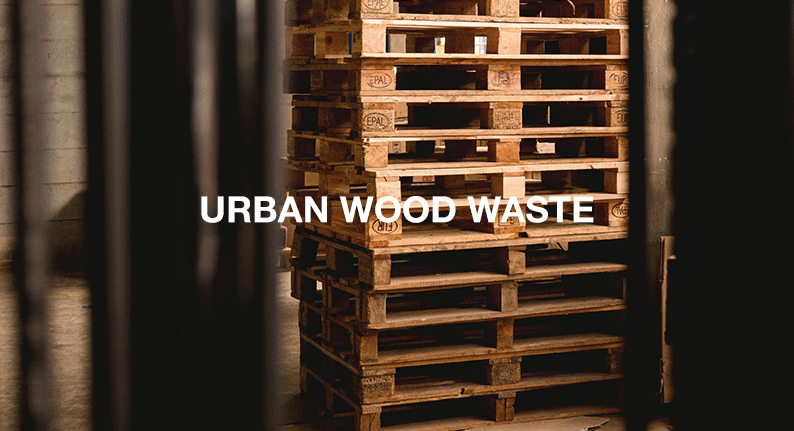The Case of Urban Wood Waste
12 Jun, 2020 7:00 AM / by Quek Leng Chuang
Urban Wood Waste in Singapore
The term “Urban Wood Waste” by itself might sound unfamiliar to many people not working in Environmental services. When we think about waste in an urban context, we rather think about construction waste, packaging waste or electronic waste. However, there are remarkable amounts of urban wood waste incinerated every year in Singapore. At Environmental Solutions (Asia), we intend to change this.
Urban wood waste
There is no universal definition of wood waste which can stem from different sources in an urban context. In Singapore, wood waste originating from operations in parks or gardens is named horticultural waste. Recycling rate for this kind of waste, which also includes plant parts and trimmings, is currently at only 73%.
Urban wood waste refers to wood used for crates, boxes, used pallets and planks. In other countries, especially in the northern hemisphere, wood is also frequently used in construction. After serving their purpose, crates and pallets can be reused multiple times. However, when they are near the end of their lifetime, still 131 800 tons (44% of total wood waste) are not recycled.
At Environmental Solutions Asia, we contribute to the 66% that is recycled in Singapore. We focus our work on diverting wood waste away from the landfill, using it for wood waste gasification in order to fuel our recycling operations. This helps our customer save costs on disposal too.
Urban wood waste is much drier than horticultural waste. Drier waste enables us to conduct gasification with a higher efficiency, generating more electrical energy and heat for fuelling our recycling operations. Therefore, we decided to take in this kind of wood waste for our renewable energy creation.
Pallets mostly consist of plywood. In line with Zero Waste principles, we encourage the reuse of pallets, crates and other wood products as far as possible in order to prevent the destruction of forests. When trees are cut down, this disables the soil from capturing carbon dioxide in nature which is desperately needed in times of climate change. But if urban wood products are near the end of their lifetime, it is from an ecological standpoint of view superior to gasify them in order to create energy than to incinerate them and discard the ash on the landfill.
Gasification reduces the quantity by more than 97% and thus, the remaining amount of ash is smaller than for incineration. What’s more, the incineration or gasification ash can serve purposes other than the landfill.
Wood waste gasification at Environmental Solutions
In accordance with the guidelines of the NEA, we transport your wood waste to our facility. There, we proceed it to pellets that we store at our facility in order to be used for gasification whenever needed. The gasification of urban wood waste therefore gives us added flexibility to create more energy which does not depend on current weather conditions (as our photovoltaic panels).
Currently, we gasify 500 metric tons of urban wood waste per year. For our next projects, e.g.g plastic-to-fuel pyrolysis, we can process more urban wood waste in order to provide supplementary amounts of energy.
Does your company still discard urban wood waste? Instead of sending it for incineration, just call on us and you can save on those costs. We are more than happy to pick up your urban wood waste and manage it in a more sustainable way. If you have more than wood that you would like to see be recycled, check out our other services.
Topics: Carbon Offset, Corporate Social Responsbility, Environmental Offset, Reimagining Sustainability, Sustainability in Singapore, Wood Waste
Written by Quek Leng Chuang
LengChuang is a chemical engineer and an expert in carbonomics. He is the founder and owner of Environmental Solutions (Asia) Pte Ltd.

